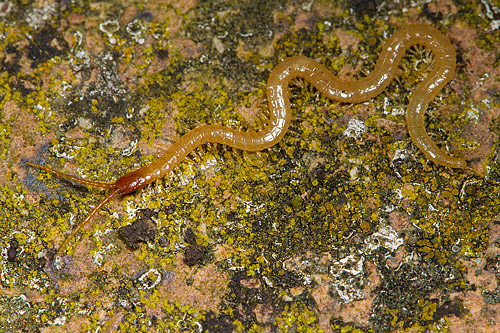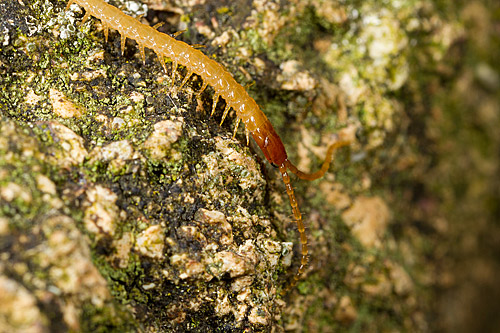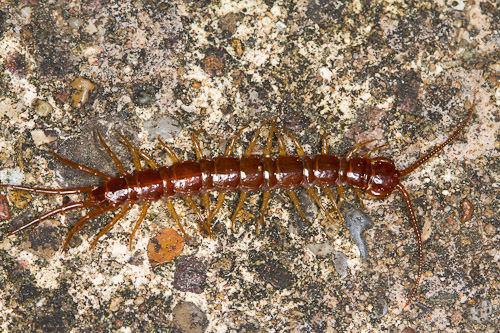
Myriapoda
Chilopoda
Centipedes

Vancouver Island, Canada - September 2011
Centipedes are easily distinguished from millipedes by them having only one pair of legs per segment and also the presence of a pair poison claws immediately below the head, which they use for capturing and injecting venom into their prey. Many species, particularly the large, tropical ones, are capable of delivering a painful bite to humans.

Stigmatogaster subterranea - Nottinghamshire, England - April 2013
All members of the Geophilomorpha are blind and lead generally subterranean lives, living in soil and rock crevasses. one of the commonest of the 31 species of Geophilomorphs found in Britain is Stigmatogaster subterranea (above and below) which is found abundantly in soil in woodlands and gardens.

Stigmatogaster subterranea - Nottinghamshire, England - April 2013
The Stone Centipedes (Lithobiomorpha) have only 15 pairs of legs and the most commonly encountered member of this group in Britain is Lithobius forficatus which grows up to 30mm in length.

Lithobius forficatus - Nottinghamshire, England - October 2012
Ray Wilson owns the copyright of all images on this site.
They may not be used or copied in any form without prior written permission.
raywilsonphotography@googlemail.com